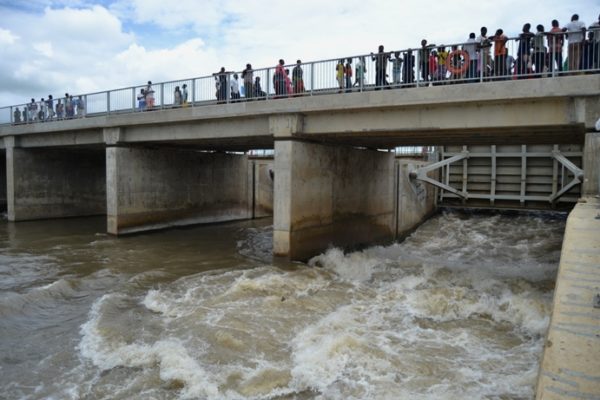Diplomatic storm over swelling lake
Malawi risks a diplomatic storm with neighbouring Mozambique unless the swelling Lake Malawi and the Shire River are managed.
The rising lake levels have caused devastating flooding in shoreline communities and resorts and along the riverbanks of its sole outlet, Shire River.

Mozambique has since questioned Malawi on why the Shire was pouring high volumes of water into Zambezi River, according to a senior Malawi Government official.
The disruption in business and livelihood has amplified the affected populations’ demands for the National Water Resources Authority (NWRA) to open Kamuzu Barrage on the Shire River in Liwonde Town, which regulates both lake and Shire River levels.
But both the water regulatory authority and the Department of Disaster Management Affairs (Dodma) say nodding to the growing petitions to open the floodgates on the country’s largest river could be catastrophic below the river.
In an interview, Dodma commissioner for disasters Charles Kalemba said the demands for further opening of the barrage at Liwonde could have disastrous consequences beyond Tedzani, Nkula and Kapichira hydro-power generation sites which churn out about 95 percent of the electricity for the national grid.
He said: “Opening the lake would cause a disaster we cannot handle. The barrage is already releasing more water than the recommended amount for the Shire River, which flows into the Zambezi on the way to the Indian Ocean.
“This has already sent alarm as Egenco [Electricity Generation Company] is concerned about the safety of its power generation sites down the Shire and Mozambique is questioning Malawi for giving it too much water, which may endanger lives and economic activities along the Zambezi.”
This brings into the picture the touchy geopolitics of shared waters.
Malawi and Mozambique do not only share the inundated Rift Valley Lake, alternatively called Lake Niassa on the Mozambican side, but also the Shire-Zambezi River Basin.
Internally, concerns are heightened that bypassing the automated system that controls outflows from the surging lake via the Great Shire would endanger lives, livelihoods and public assets downstream.
In their minds, authorities also see increased gushes from the lake shattering sites that generate nearly all electricity for the nation; Walker’s Ferry, the main source of potable water for Blantyre City, and thousands of people in the flood-prone twin Lower Shire Valley districts of Chikwawa and Nsanje.
However, NWRA spokesperson Masozi Kasambara said although the current volumes of water released by the Kamuzu Barrage are “very high” for the Shire River’s capacity, there is no cause for worry for people in the lowlands of the Lower Shire region and along the Zambezi in Mozambique.”
He said: “So far, neither NWRA nor the Ministry of Water and Sanitation has received any official communication from Mozambique on the alleged fears.
“Malawi and Mozambique have a Joint Water Commission where the two neighbours share means for development and management of shared water resources.”
But two Mozambican journalists have told The Nation that there is a looming danger of flooding in the low-lying farming communities along the Zambezi even though the vast floodplain, with fertile alluvial soils, has been hit hard by droughts due to the El Nino weather pattern ravaging southern Africa.
According to the scribes, there have been reports of flooding in the lakeside districts in Mozambique’s Niassa Province.
The Nation has written to the regional director of the Zambezi River Authority and provincial authorities in the Niassa Province to inquire about their take on the rising lake levels and current situation.
We have also asked the neighbours how they are working with Malawian authorities to manage the shared water resources for peace and safety for all.
We are yet to get the responses.
The NWRA publicist assured though that their hydrological monitoring systems are frequently checked, “and everything is currently under control”.
Kasambara told The Nation that Malawi is complying with all shared water resources conventions and treaties that it signed.






This could be a blessing in disguise, especially now when the country is in a state of hunger due to prolonged hunger. All we need to do is manage the water by channelling it to irrigation farming, even in the upper shire region. I know it requires money, but with strong political will, it is very much doable
That is a wonderful idea!!.. wonder why it is not being discussed?
Interesting read – but what about Tanzania – Malawi shares the lake with them as well, and there have been recent videos on social media showing extensive flooding of communities there. If this is potentially a situation made worse by flood protocols not being followed at the barrage back in January (ie. correct inputs in the model should have forecasted flood level of 476.1 being reached by April, and all gates should have been *fully opened* at the barrage, and they STILL aren’t all open), then how long until Tanzania also blames Malawi for flooding?